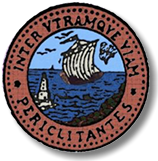History of The Accademia

Vicissitudes of a cultural cenacle between XVIII and XXI century:
The Accademia Peloritana dei Pericolanti of Messina
1. «Inter utramque Viam Periclitantes». To the origins of the Academy, by Daniela NOVARESE.
2. Notes about some «Periclitantes» and their «Discorsi» (18th-19th centuries), by Mariaconcetta BASILE.
3. . Following Muratori‘s footsteps. Reflections of eighteenth-century reformism in the oration about «La necessità di un nuovo codice di leggi» (1788) by the academician Nunzio Minasi, by Carmen TRIMARCHI.
4. Accademia Peloritana dei Pericolanti and University of Messina, between nineteenth and twentieth century, by Patrizia DE SALVO.
5. 1918-1945: The Accademia Peloritana dei Pericolanti between the two wars, by Enza PELLERITI
6. The last few years, by Vittoria Calabrò.
Reference Bibliography.
Ludovico Antonio Muratori
1. “Inter utramque viam Periclitantes”. To the origins of the Accademia Peloritana dei Pericolanti
by Daniela NOVARESE
a. The intervention of Ludovico Antonio Muratori and the association at the Accademia dei Dissonanti di Modena.
The vicissitudes of the constitution of the Accademia Peloritana dei Pericolanti of Messina are inextricably linked to a symbolic figure of the Italian (and not just) academic survey of the XVIII century: Ludovico Antonio Muratori, whose “buon gusto" would have been assumed as measuring meter of every well-organized cultural cenacle. The act of «aprobación a la Academia» is dated 8 August 1729, but the establishment of the association dates back to two years earlier.In fact, in April 1727, Paolo Aglioti, doctor of law and antiquarian scholar of Messina, supported by a group of noble citizens , “interessati a riunire I buoni ingegni di Messina nel…fine di cooperare all’incremento degli studi non solo lettrarii…ma anche scientifici”, sent a letter to Muratori to ask him to aggregate the Periclitantes, who represented an important reality within the urban context of Messina, to the Accademia dei Dissonanti di Modena.
Paolo Aglioti reached this purpose and 10 years later , with the name of Ardito, he became Permanent Secretary of the “Periclitantes” , by virtue of his good relationship with Muratori .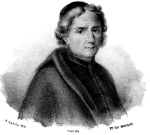
Historiography has long been focused on the long lasting links between 18th-century Sicilian cultural elites and the Modenese scholar testified by the foundation in Palermo, already in the 1718, of the Accademia del Buon Gusto, an evident tribute to the Muratori; it was inaugurated in September of that year, with the Giacomo Longo’s “ Oratio ad Siculos sive excursus varius rei litterariae praesertim Siculae, ad bonam mentem exercendam,” , from Messina.
Sixteen years later, Giacomo Longo , together with other intellectuals islanders, (Giovan Battista Caruso, Agostino Pantò), submitted to Muratori the project of founding a new Cenacle , addressed to the study of the juridical sciences and their development , but Muratori found it difficult to carry out. The Muratori, did not fail to underline the volcanic activity of Sicilian scholars, but, sometimes, he did not hesitate( as in the case of some writings by the canon of Palermo Antonino Mongitore), to distance from themselves and to stigmatize a religious fervor often founded on superstition.
With specific reference to the city of the Strait, cannot go unnoticed the circumstance that, in addition to Giacomo Longo and the small group of intellectuals available to support, in Sicily, the reform program of Vittorio Amedeo II of Savoy (1713-1715), against the tradition expressed by the so-called "Spanish party" embodied by the canon Mongitore, are known and documented ties of Ludovico Muratori with other exponents of that intellighentia of Messina linked to the teaching of neoterics in the Studium Messanae.
The reference is to Michelangelo Fardella of Trapani, follower and student, in Messina, of Giovan Alfonso Borelli, and among the first members, in 1683, of the new Accademia dei Dissonanti of Modena. He survived the anti-Spanish repression and his name appears in an index of the rubelli of Messina forced to leave the city of the Strait abandoned by the French. Fardella is considered one of the first popularizers of Descartes’ thought and he found shelter in Modena, where he would teach logic and mathematics in 16781-82, physics and geometry in 1682-83 and metaphysics in the following two years.
He thus reached his half-brother Tommaso already a reader of humanity in Messina and a member of the Accademia della Fucina and, from 1679 tutor, in Modena, at the Marquis Bonifacio Rangoni, acquaintance of Muratori.
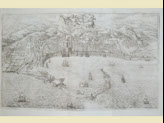 For some time, therefore, there had been a network of relations between Messina and the Emilian city in which, moreover, the ancient Studium, born around the teaching of the famous Pillio da Medicina in 1175, had suffered, like that of Messina, several misfortunes and had remained silent for a long time, until its refounding in 1682 and the subsequent imperial authorization granted in 1685.
For some time, therefore, there had been a network of relations between Messina and the Emilian city in which, moreover, the ancient Studium, born around the teaching of the famous Pillio da Medicina in 1175, had suffered, like that of Messina, several misfortunes and had remained silent for a long time, until its refounding in 1682 and the subsequent imperial authorization granted in 1685.
Perhaps these circumstances, together with well-founded personal relationships, should have given rise to the sympathy of Muratori himself who, urged by Paolo Aglioti, in making himself available to support the cause of the aggregation of the Accademia Peloritana ai Dissonanti, on April 25, 1727 he wrote, in response to the solicitation of the nobleman from Messina:
“Fò plauso al nobil genio di Lei … tutto intento a rimettere in codesta Città il gusto della buona letteratura. Gl’ingegni siciliani, ogni uno lo sa, dalla natura sortiscono un gran fuoco, e più degli altri son abili a far cose mirabili. Ma codesta riguardevolissima Città nelle disgrazie del secolo prossimo passato ha patito di troppo, anche per conto degli studj. Il rimettere in essa il buon gusto e l’emulazione non sarà che un’impresa nobilissima…”, with evident allusion to the suppression of the Studium Messanae which took place forty years earlier.
About a year later, the Muratori collected the fruits of his commitment and he wrote to Aglioti, on February 6, 1728 "che si sarebbe fatta in breve l’aggregazione di codesta Accademia alla nostra» and in fact, within a month , the aggregation decree was ready and the President of the Dissonanti sent it to the Messina Senate. It stated that, having verified the favorable votes of the members,”Peloritanam Academiam hoc est universos, ac singulos ipsius socios, Academiae Nostrae Dissonantium, unimus et aggregamus”.
In constant correspondence with the Muratori, Paolo Aglioti, in 1727, gave him , in truth very unhappily collated (among other things, although he knew it, he did not adequately use the most important manuscript), which was published, together with his modest preface, in Volume XIII of the “Rerurum Italicarum Scriptores ", in which the same Modenese scholar recalled how the two Academies were linked by " perpetuo foedere et amicitia ".
The link with the Dissonanti had to remain unaltered over time. On the occasion of the death of Ludovico Antonio Masons, happened in January of 1750, the Academy of Messina, grateful to that scholar, paid him homage with a solemn Oration.
Still many years later, the presence of some Periclitantes appears significant on the occasion of the celebrations for the centenary of the foundation of the Accademia Modenese in 1780: this presence has been reciprocated by certain members of that cenacle, arrived in the city of the Strait in 1793, to participate, with its own compositions, at the solemn meeting Per la statua di bronzo innalzata a Ferdinando IV.
b. The city of the Stretto in the 18th century, an urban space without Studium in search of new cultural institutions.
The aggregation of Periclitantes to the prestigious Cenacolo di Modena imprinted an acceleration to the process of official recognition of their activities. The Annals of Caio Domenico Gallo register,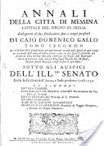 punctually, on August 8, 1729, the foundation, in Messina, of an Academy “all’uso delle più famose d’Italia, dove due volte il mese si facessero discorsi di belle Lettere, Filosofia, Morale e Naturale, Storia Sacra e Profana, Teologia Dommatica, Canonica, Matematica e Geografia, delle antiche Medaglie e Memorie, Giurisprudenza e Materie Cavalleresche”.
punctually, on August 8, 1729, the foundation, in Messina, of an Academy “all’uso delle più famose d’Italia, dove due volte il mese si facessero discorsi di belle Lettere, Filosofia, Morale e Naturale, Storia Sacra e Profana, Teologia Dommatica, Canonica, Matematica e Geografia, delle antiche Medaglie e Memorie, Giurisprudenza e Materie Cavalleresche”.
On 29 August of that same year the Senate Peloritano deliberated to grant "magnam aulam palatii senatorii praedicti" for the meetings of the newborn cenacle. However, this seat, had to be abandoned shortly thereafter for another much more prestigious one, the "antecamera de esse palacio real", which was granted by the viceroy conte de Quiros on 25 November 1729.
It was born so, officially, the Periclitantes, Peloritana Regia Academia, with clear reference to the configuration of the city territory, circumscribed, on one side, by the Peloritani mountains and stretched out, from the other, toward that insidious arm of sea. This image is well represented in the logo of the cenacle from a ship sailing the rough waters of the Strait made even more untrustworthy by the presence of the Homeric monsters named Scilla and Cariddi, metaphor as the same secretary Charles Vitali had to explain, of the human thought, always in unstable balance " fra varie difficoltà e controversie» in the difficult attainment of Truth, and of the men of science, continually "inter utramque viam periclitantes."
So, in the first thirty years of that eighteenth century, characterized throughout Europe by a renewed anxiety for reform, the city of Messina reappropriated a new cultural space, a symbol of a burning desire for rebirth, after the events linked to the anti-Spanish revolt of 1674-1678.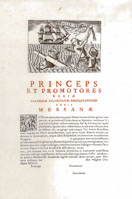
We must remember in fact, that Messina, as a result of the outcome of that event, was suffering the heavy effects of the Spanish repression.
With a decree of January 8, 1679, the viceroy Francisco de Benavides, Count of Santisteban, declared Messina civilly muerta and he repealed all the ancient and numerous privileges, he decapitated the political elite of the city abolishing the Senate, expression of the mastra of the most prominent families and he ordered the closure of the Studium, founded by the Society of Jesus in 1548, which precisely in the mature seventeenth century lived its most significant season, accused of having supported the anti-Spanish political design, warped by the local ruling classes.
On that occasion the action of the Count of Santisteban had intended to punish the city hardly, depriving it of identity institutions, the University and the Senate; the same fate suffered the Accademia della Fucina that, along with other cultural cenacles, was born in Messina, following the taste and fashion of the times.
It was, therefore, an urban space without Studium, remained without significant cultural centers that in which, for the events that were first remembered, were set the premises for the foundation of the Accademia dei Periclitantes, the only one, among the so many raised in the city of the Stretto, to come up to us.
c. The physiognomy of the Academy through the statutory editors of the eighteenth and nineteenth centuries. Some examples.
Obtained the authorization and strong of the prestigious aggregation to the Dissonanti, the Accademia dei Pericolanti, (chaired by Andrea Minutolo called the Tranquillo) began its activity and, preliminarily, in that same year 1729, were born some Statutes, that in 22 points , outlined its original organization.
In particular, that text provided for the election of a Prince, as well as two Promoters "ogni anno" and a secretary whose office was for life, as well as the convocation of two monthly meetings to which were added four extraordinary to be held " nella solennità della Sacra Lettera, negli Anniversari delle Nascite degli Augustissimi Nostri Monarchi e in un giorno della Settimana di Passione per la morte del Redentore”.
The subjects of the academic discourses would have been "le belle lettere, la filosofia morale e naturale, la storia sacra e profana, la teologia dommatica et i canoni, le scienze matematiche, et in ispecie la geografia, i documenti antichi, le medaglie, la giurisprudenza, il duello e le materie cavalleresche, tutte vestite alla foggia accademica lungi dalle forme scolastiche>>”.
To a more punctual organization, with the articulation in ordinary, supernumerary and honorary members and with the provision of three Classes, each composed of 16 members, the new statutory draft of 1793 was reached, and it, also, provided that the “memorie …o componimenti … se saranno giudicate degne di stampa… saranno date alla luce a spese dell’Accademia col nome di Atti della R. Accademia Peloritana”.
The following rules of December of 1826 and the January of 1827, identified ,inside the cenacle, four separate Classes: “la prima detta delle scienze fisiche, che abbraccia le scienze naturali e le scienze esatte. La seconda detta della legislazione, che comprende le scienze morali e politiche. La terza detta della morale sperimentale, che racchiude la storia e tutte le altre scienze che servono di corredo a questa. La quarta finalmente delle belle lettere e belle arti, in cui entrano la poesia, l’eloquenza, l’architettura, la musica ecc.”
The creation of the Classes inevitably required further changes to the original structure of the institution. If, in fact, the Academy had a President, a Vice President and a General Secretary, each Class would have had, from that moment on, a Director, a Deputy Director and a Secretary, and a distinction between Class sessions and General Assembly.
The nineteenth century ended with a further and more detailed statutory drafting approved in April 1889, which better specified the articulation of the four Classes (I of physical, natural and mathematical sciences, II of legal and social sciences, III of historical and philological sciences, IV of letters and philosophy, which also included a section of fine arts).
It was also obligatory for ordinary members to reside in Messina, as well as the presence of a librarian, whose office was five years and an economist, who replaced the cashier provided for in the previous statutes . Divided into six heads (Costituzione dell’Accademia, Dignitari e loro elezione, Delle adunanze, Elezione dei soci e loro doveri. Atti Accademici, Biblioteca, Amministrazione e disciplina) for a total of 62 articles (including transitional provisions), the Statutes of 1889 can be considered a "modern" text, expression of a cultural cenacle that, proud of its history and its traditions, was preparing to face the challenges of the new century.
2. Notes about some «Periclitantes» and their «Discorsi» (XVIII-XIX centuries)
by Mariaconcetta Basile
a. The two volumes of Discorsi accademici kept at the Regional Museum Library.
The analysis of the contents of two surviving volumes of Discorsi accademici, kept at the Library of Messina’s Museum, is particularly important to better clarify the role played by the Accademia Peloritana dei Pericolanti into the urban context between the mid-eighteenth and early nineteenth centuries. They are the only evidence of the academic life of those years, having the various events, and especially the war, as well as earthquakes (and especially that of 1908), caused the loss of much of the documentary material concerning academic activities.
It has been observed that the Accademia Peloritana dei Pericolanti, already in the mid-eighteenth century, “era venuta in fama non solo nell'isola, ma benanco in altre più lontane contrade: dappertutto riceveva prove non dubbie di stima e di simpatia”. However, “ mantenutasi con lustro e decoro per lo spazio di 16 anni>”, following the plague of 1743, in which 63 academicians died, including the founder Paolo Aglioti, the association "viveva una vita assai stentata”. Three years after the epidemic, the cenacle reopened on 17 August 1746, with the Diego Luigi Piccolo’ oration, entitled, perhaps not by chance, Lo studio delle belle lettere come sollievo del savio nelle sue disgrazie.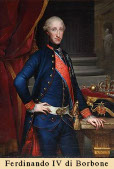
The inauguration was followed by a solemn ceremony in the presence of the Archbishop of the Diocese Tommaso Moncada, the Governor and the Senate of the city, “mercé gli sforzi de' pochi sopravvissuti, e specialmente per le zelanti cure di Domenico Alliata Di Giovanni principe di Villafranca, di Nicolò Maria Atanasio Ciampoli, dell'Abate Giovanni Giorlando, del P. M. Giuseppe Maria Ermanno, di Mario Gaetano Aglioti, del dottor Giovanni La Bruto, del canonico Placido Piccolo e del Principe di Sperlinga D. Giovanni Natoli e Ruffo d'Alifia”.
It is not surprisingly that the Discorsi Accademici reveal a "silence" which, starting from 1737, the year of the Dissertazione sulla natura del fuoco sottorraneo, by Dr. Pietro Di Blasi, lasts until 1747, when it was inaugurated with the Discorso intorno all'origine del metropolitico chiesastico diritto by an anonymous author. After the deadly event of the pestilence, a fundamental contribution for the " restaurazione del sodalizio " it was that of Andrew Gallo, already founder, in 1761 "con fini prettamente scientifici” of the Accademia dei Riparatori, and that, starting from 1766, he assumed the charge of secretary and perpetual censor of the Periclitantes.
Slowly the Academy returned to its ancient prestige and a sign of this one can be found in the circumstance that, with a decree of December 6, 1766, the Calatini of Caltagirone asked for the aggregation to the Peloritana.
In 1767, the Senate of Messina, which annually paid a fee of one hundred onze to the Jesuit Fathers for teaching activities, following the expulsion of these from the Kingdom decreed by Ferdinand IV, agreed to appoint forty onze to the Pericolanti ones to fulfill its one cultural aims.
An arrest of the academic activity occurred after the earthquake of 1783, attested also in the Discorsi, which recorded a vacuum until 1787. With a dispatch of 25 February 1792 Ferdinand III of Bourbon, «vedendone il Governo i buoni frutti» assigned an annual income to the Academy on the Treasury of the State, " da qui una nuova spinta agli Accademici di coltivare maggiormente la patria storia». In accordance with this trend inversion, the Periclitantes began to publish a Giornale di Letteratura, scienza ed arti and to launch competitions among academicians on subjects of particular interest.
b. The rules on dissertations laid down in the Statutes of 1729 and 1793.
Through the examination of the two volumes of Discorsi, it was possible to reconstruct (at least to a certain extent) the cultural climate of Messina during the 1700, together with the role and aims that the Academy proposed between the mid-eighteenth century and the beginning of the following one.
In particular, the subjects of particular interest to be trated, were those established by the 1729’ Statutes and confirmed by the following ones, which provided for " discorrersi di ciò che apparteneva alla Nostra Patria Messina, e alli suoi territori e marina, quindi di ciò che rendeva chiara l'isola tutta di Sicilia, e finalmente di materie universali” (art. 20)
Matters of various kind, established in the art. 7, and inclusive among "le Belle Lettere, la Filosofia Morale, e Naturale, la Storia Sacra e Profana, la Teologia Dogmatica, et i Canoni, le Scienze Matematiche, et in specie la Geografia, i documenti antichi, le medaglie, la Giurisprudenza, il Duello, e le Materie Cavalleresche; tutte vestite alla foggia Accademica lungi dalle forme scolastiche».
The activities of the Academy were articulated in ordinary and extraordinary meetings, during which general dissertations and commemorations were held in memory of, or, on the occasion of historical and political events very important for the Kingdom or for the City.
In this regard, the reform of the Statutes of 9 December 1793 did not change the old rules, providing for the discussion of matters of doctrine and public utility in the three extraordinary annual meetings.
In particular, it was established that the primary aim of the association was «d’illustrare i pregi della nostra Patria, e di promuoverne i vantaggi» (art. II).t So, the works of the academicians took concrete form in the fine letters and sacred and profane antiquities, in the physical and in the political - economic sciences (Article III). The Academy, moreover, «non mancò d'indire de' periodici concorsi intorno ad argomenti di pubblico interesse, rimeritando il miglior lavoro con una medaglia d'oro, ed anco con incoraggiamenti pecuniari», with the Reading in public meetings (art. XII), assuming the financial burden to publish those works in the Acts (art. XIII). From the documentation received, however, it would seem that, despite the good intentions, the initiative of Messina could not involve other institutions of the island in the project but was rather a phenomenon confined only to Peloritana’s reality , expression of provincial and municipal closure and social and political immobility.
c. About some Academicians between XVIII and XIX century.
The information about the authors of the Discorsi accademici is meagre and many of them are anonymous. From the analysis of the articles of the Statute of 1793 emerges the need of the peloritan’s cenacle to involve new characters in the discussions and competitions, in a period in which, not surprisingly, its life proceeded stubbornly. Also the study of Discorsi accademici reveals the difficulty of animating new debates. The leading personalities, cultured and representative of the most important families in Messina, were few and more interested in maintaining old social balances than in theorizing new ones. It was, therefore, required the entry of different characters who gave the association a new political and cultural imprint, without however upsetting its pre-existing social balance.  The so-called "old guard" of the academic members belonged to illustrious personalities from noble families of Messina. Just to mention the most significant names, we can remember Francesco Arrosto, future professor of chemistry at the Carolina Academy; Domenico Benedetto Balsamo, from the illustrious patrician family of the princes of Castellaci, who taught theology at the Carolina Academy together with Alberto Corrao; Letterio Fenga , a good jurist, judge of the first appeals, councillor of the Grand Archbishop's Court and master notary of the Portolania of Messina; Ottavio Saccano Nicolaci, also a jurisconsult and expert in Roman law; Carmelo La Farina, Archival Chancellor of the City Hall, Judge of the Grand Criminal Court and Professor of Geometry and Trigonometry at the Royal Carolina Academy , Giuseppe Romeo, descended from an ancient and noble Veronese family, consul of land and sea. The life of the Academy of those years revolved, however, in particular, around the figure of Andrea Gallo, the only son of the famous annalist Gaius Dominic, «uomo di vasta dottrina», to whom “ eran familiari le Belle Lettere, la Storia patria, l'Archeologia, la Numismatica, le Scienze naturali, la Filosofia, la Giurisprudenza, le Matematiche, e varie lingue antiche e moderne”. The ecclesiastical class belonged mostly to the "new guard", or aspiring such,. Ignazio Bonaccorso and Marino Salvatore, both parish priests, and the priests Nicola Corrao and Antonio Visco, who contributed to enrich the speeches about the tradition of the Holy Letter of the Virgin Mary to the Messinesi, on the Passion and death of Jesus Christ and “su la maniera di come debba osservarsi la santità delle Feste, e quali occupazioni possonsi permettere per evitate i disordini dell'oziosità”.These were, on the whole, people aggregated on the basis of personal relationships or political convenience, mere honorary members who, in fact, restricted the list of those who could make an effective contribution to the cultural activity of the Academy, where the opening to external people, mostly well-known clergymen, seemed necessary to acquire consensus and validate an ancient social status.
The so-called "old guard" of the academic members belonged to illustrious personalities from noble families of Messina. Just to mention the most significant names, we can remember Francesco Arrosto, future professor of chemistry at the Carolina Academy; Domenico Benedetto Balsamo, from the illustrious patrician family of the princes of Castellaci, who taught theology at the Carolina Academy together with Alberto Corrao; Letterio Fenga , a good jurist, judge of the first appeals, councillor of the Grand Archbishop's Court and master notary of the Portolania of Messina; Ottavio Saccano Nicolaci, also a jurisconsult and expert in Roman law; Carmelo La Farina, Archival Chancellor of the City Hall, Judge of the Grand Criminal Court and Professor of Geometry and Trigonometry at the Royal Carolina Academy , Giuseppe Romeo, descended from an ancient and noble Veronese family, consul of land and sea. The life of the Academy of those years revolved, however, in particular, around the figure of Andrea Gallo, the only son of the famous annalist Gaius Dominic, «uomo di vasta dottrina», to whom “ eran familiari le Belle Lettere, la Storia patria, l'Archeologia, la Numismatica, le Scienze naturali, la Filosofia, la Giurisprudenza, le Matematiche, e varie lingue antiche e moderne”. The ecclesiastical class belonged mostly to the "new guard", or aspiring such,. Ignazio Bonaccorso and Marino Salvatore, both parish priests, and the priests Nicola Corrao and Antonio Visco, who contributed to enrich the speeches about the tradition of the Holy Letter of the Virgin Mary to the Messinesi, on the Passion and death of Jesus Christ and “su la maniera di come debba osservarsi la santità delle Feste, e quali occupazioni possonsi permettere per evitate i disordini dell'oziosità”.These were, on the whole, people aggregated on the basis of personal relationships or political convenience, mere honorary members who, in fact, restricted the list of those who could make an effective contribution to the cultural activity of the Academy, where the opening to external people, mostly well-known clergymen, seemed necessary to acquire consensus and validate an ancient social status.
1. Following Muratori's footsteps . Reflections of eighteenth-century reformism in the oration about «La necessità di un nuovo codice di leggi» (1788) by the academician Nunzio Minasi.
by Carmen TRIMARCHI
a. Nunzio Minasi, a convinced supporter of legal reforms.
Among the most significant writings produced within the Accademia Peloritana during the eighteenth century is, certainly, La necessità di un nuovo codice di leggi, the oration presented in 1788 to the members of the association by Abbot Nunzio Minasi. We don't know much about Nunzio Minasi, we don't know even the essential biographical data such as the dates and places of birth and death or the studies he followed; however, his writings and scarce news in our possession are sufficient to bring out a brilliant character, a protagonist of the cultural and political life of the city of the Strait. We know that the Doctor Minasi had a certain interest in some issues highlighted by the political-juridical culture of his time; in fact, back in 1777 and 1804, two orations recited always at the Accademia Peloritana and entitled, respectively, Discorso morale politico nel quale si esamina il lusso per il rapporto che ha alle diverse forme de’ governi” and Discorso sulle sorgenti della pubblica mendicità della nostra Patria, e sui mezzi per prevenirla e ripararla . As can be seen from the arguments chosen, Minasi liked to deal with the “cose della politica” a passion that would have brought him some serious problems with the Bourbon police.In the Annali della città di Messina, Giuseppe Oliva tells us that, in 1808, Minasi had been made the subject of an anonymous complaint, remaining victim of the repression organized by the governor Giuseppe Artale, and he refers to a speech, with liberal and patriotic tones , pronounced by him on May 31, 1813, during a council session. We know, moreover, that the Minasi was, together with Andrea Gallo, a “fratello muratore “belonging to the lodge “della Riconciliazione”.
The circumstance that the two illustrious citizens of Messina were of bourgeois extraction testify how, in the second (half) of the eighteenth century, the Sicilian masonry as well as the European one, began to convey new social values, joining the traditional values related to feudal society, such as those related to the nobility of birth, others of "bourgeois" inspiration, connected with individual abilities.
All this found particularly fertile ground in a city with a "bourgeois vocation" like Messina, whose inhabitants had founded their fortunes on trade and commerce, developing over the centuries a strong identity, around which the demands for self-government of the ruling elites and the mercantile and maritime inclination of its productive classes were interwoven .
b. The oration about La necessità di un nuovo codice di leggi.
Returning to” La necessità di un nuovo codice di leggi”, Minasi's main purpose was to demonstrate that " per rilevar l’umanità dalli guai che l’opprimono, era necessario avere un Codice di leggi chiaro, preciso, senza la menoma ambiguità nell’espressioni alla portata d’esser capito da tutti i cittadini, fondato nella raggione, e che avesse riguardo alli costumi del secolo presente”.
Coherently, the dissertation dealt with some of the themes dear to the legal Enlightenment of the second half of the 18th century, such as the anti-Romanistic and anti-jurisprudential controversy and the theorization of a certain, clear law which, derived from the work of a virtuous legislator and willing to be guided by philosophers, did not require any interpretation and could be exposed in a single book.
In the author's opinion, “la diversità delle leggi fatte per li diversi bisogni della Repubblica in tempi differenti, ne’ quali ne la lingua ne i costumi della nazione sono stati li medesimi; furono il motivo dell’oscurità della leggislazione, che bisognò sottometterla all’interpretazione per essere rischiarata; le leggi che prima avevano un senso chiaro, preciso, e stabile, cominciarono a farsi equivoche, oscure, arbitrarie, quindi senza autorità e senza energia, che intieramente fù assorbita dall’interpretazioni per cui l’autori di esse s’impadronirono del popolo. L’effetto dell’oscurità delle leggi é la loro vanità, e far tutto dipendere dall’arbitrio di chi è investito della facoltà d’interpretarle”.
Thus, in order to restore certainty to the laws, “il principe … servendosi del lavoro dei «veri filosofi conoscitori del cuore umano», può e deve «stabilire nuove leggi proporzionate alle circostanze de’ suoi sudditi», raccolte in nuovo codice e «ridotte nella lingua volgare”.
To better understand the meaning of these statements, it is necessary to remember how, at the end of the eighteenth century, Roman law was still the common law and the superior ratio iuris from which a myriad of systems, different from the State but internal to it, received part of its positive right.
With the gradual absolutist centralization of monarchies and principalities, ideologies came to life and, aimed at legitimizing absolutist government, they looked with great hostility at the traditional plurality of sources and at their jurisprudential management: the idea of law as the law of the Nation and of the State as its only source appeared clear.
Throughout the 17th and 18th centuries, the attitude of governments and "pensatori" became increasingly anti-jurisprudential. Emblematic, in this sense, were the considerations expressed by Ludovico Antonio Muratori, who reflected the most widespread opinions and ideological tendencies of the immediately pre-Enlightenment culture; the reflections of the Modenese scholar on the Difetti della giurisprudenza represent, in substance, the essence of all the ideas that between the sixteenth and eighteenth centuries had developed around the various attempts to reorganise the law. Thus, the mediating authority of the jurists' class, until then considered indispensable, was now being questioned and the doctrinal opinions, rather than "certezze giuridiche", as they had always been considered, appeared only arbitrary opinions of private individuals; the common law was described as a source of irrimediable quarrels about which lawyers and judges, sometimes not very much mirrored, founded their fortunes and became increasingly harsh the polemics against Roman law.
Even in the Minasi’s oration, the Justinian’s laws are not “regole per dirigere la società”, but "l’enigma proposto dalla sfinge alli Tebani e nella di cui interpretazione si segnalò Edipo” “un gergo oscurissimo; enigma impercettibile che richiede tutta l’arte de’ Maghi Orientali” and the damages that the " devozione e l’ossequio di tante nazioni per il diritto romano “ bring to the collectivity are so serious as to push our author to " sospettare di qualche congiura contro dell’umanità per giocarsi della sua sorte, e farla servire alli particolari disegni ".
c. Abbot Minasi and the legal Enlightenment.
It would be up to those doctrines that make up the complex universe called the legal Enlightenment to do the task of theorizing the urgency of a radical reorganization, indeed a real re-founding of the legal order inherited from the Middle Ages and now no longer adequate to respond to requests of a society undergoing profound transformations .
And it was among the "ruins" of this society, that started to make road the model of a simple code, clear, thought as body organized of laws organic and coherent, which the assignment was attributed to order and to make intellegibile a normative system that the enlightenment and academic par excellence Pietro Verri didn't hesitate to define "gotico e deforme”
The idea of a code in the modern sense (a system of a certain branch of the complete and non-heterointegrable right directed to a single subject of law), would have been established, however, only after the French Revolution (Penal Code of 1791) and would have found in Napoleonic codes his first great expression.
Although with peculiar features, the arguments relating to the need for a rationalization of the law in force, were also shared by the Sicilian juridical culture.
The Minasi was placed in the wake of those propositions, showing to share a process of modernization connected to the enlightened absolutism.
By denouncing clear Montesquian influences, our Author asserts, in fact, that a law must be certain, " chiara, e proporzionata all’intelligenza di chi si deve con la medesima regular” , suitable for the customs of the nation.
Moreover, the oration is enriched by various anecdotes set in exotic countries. As a man of his time, the Abbot seems to discover a " lezione di relativismo" in distant civilizations, and he questions himself and is curious about the customs and traditions of those cultures but, perfectly in line with Daniel Roche who notes, about the " visione illuminista del viaggio", those comparisons, far from questioning the values of Western society, seem to be made specifically to exalt the presumed superiority.
Starting to conclude, the Minasi was not lacking in devoting some observations to the judicial institutions of its time, emphasizing the backwardness of the criminal and civil procedure.
About the first he doesn’t hazard any hypothesis of reform, thanks to the exhaustive publication of Cesare Beccaria's publication that made superfluous any further reflection on the subject; regarding the second he complained that it had become a mere "collezzione di formule barbare proprie a prolongare le liti, che a rintracciare la verità, più acconcie a fomentare le turbolenze, a frastornare la giustizia, che a garantirla, le di cui conseguenze sono la ruina delle famiglie, ed il disturbo delle società” .
In short, it was a system absolutely inadequate for the maintenance of public order, that instead needed "una procedura più brieve, più regolata, niente misteriosa e arcana, che avesse riguardo soltanto alla sostanza, e non alle parole dovesse sostituirsi all’inviluppata, prolissa, e superstiziosa che oggi è in prattica”, in the sign of a simplification and rationalization demanded loudly by the eighteenth-century reformism, to which the cenacolo messinese, through the oration of its member Minasi, showed, in some way, to take part.
4. Accademia Peloritana dei Pericolanti and University of Messina between nineteenth and twentieth century
by Patrizia DE SALVO
a. University and Accademia: two sides of the same coin.
Going back over the most significant stages of the nineteenth-century history of the Accademia Peloritana dei Pericolanti means highlighting the close relationship that exists in the second half of the nineteenth centuries, between the two most important cultural institutions in Messina: the University and the eighteenth-century Association. It is no coincidence that, since 1838, at the time of the Bourbon refoundation of the university, the desire to reproduce the ancient link between the city, the university and the academies, of which the Peloritana was the only one to have remained alive, emerged.
The inauguration of the University courses was celebrated, in fact, with two distinct solemn "orazioni", one read by the professor of eloquence Mauro Granata, in the premises of the university library, the other pronounced, in the Gran Galleria del Palazzo del Comune by the academician Domenico Ventimiglia.
Over the years, the bond was strengthened not only by the presence of many professors among academicians but also by the localization of the Academy itself. 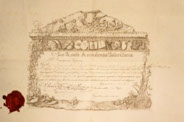 tante», donato proprio dalla Regia Università.
tante», donato proprio dalla Regia Università.
In 1846, in fact, the association left the halls of the Palazzo Municipale where it had been housed until then, to move to " un bellissimo fabbricato attiguo alla Regia Università degli Studi”and several years later, in 1884, the seat of the academy would have found location "in altro locale più ampio e conveniente nel piano sottostante” donated by the Regia Università.
During the revolution of 1848, the cenacle followed the fate of the University, which, just ten years after reopening, was closed. The almost total identification between the members of the Academy and the prominent names of the university teaching body demonstrates the close link between the two cultural institutions, which became the centre for the elaboration and diffusion of anti-Bourbon ideas and feelings. If we look at the names of the Messina’s intellectuals linked to the many anti-government initiatives, we immediately notice how they belong to the academic and university body.
Among these, the components of the La Farina family, for example, all linked to the Academy and the University: Carmelo La Farina, professor of geometry and a member of the Periclitantes, member of the Sicilian Parliament in 1848, persecuted and arrested, lost his post in 1850, following a complaint, because of his political ideas. Silvestro, the eldest son, also a professor of geometry and academic, suspected of subversive activities was imprisoned.  The other son, Giuseppe, an academician with a degree in law, led his colleagues against the Bourbons; Giuseppe Natoli, a professor of civil and academic law, was to become Minister of Education of the Kingdom of Italy between 1864 and 1865; Luigi Pellegrino, a first-class academic and university lecturer, was to be a member of the national parliament and Francesco Todaro a lecturer and academic would sit in the Senate of the Kingdom.
The other son, Giuseppe, an academician with a degree in law, led his colleagues against the Bourbons; Giuseppe Natoli, a professor of civil and academic law, was to become Minister of Education of the Kingdom of Italy between 1864 and 1865; Luigi Pellegrino, a first-class academic and university lecturer, was to be a member of the national parliament and Francesco Todaro a lecturer and academic would sit in the Senate of the Kingdom.
The University, closed in reality only for two years, was subject, to its reopening, to restrictive rules so restrictive as to reach the collapse and also the activity of the Academy resumed slowly in 1852, but, due to the Bourbon censorship, the sessions were limited to the annual meetings, in which the birth of the Sovereign was commemorated, and to which only the military and civil authorities took part, while the inaugural "speech" was almost always held by a "non-Messinese". The increasingly close relations between the two institutions were also manifested on the occasion of the severe deaths due to the cholera epidemic that affected, in 1854, a third of the city's population and decimated also a good part of the members of the Academy and the teaching staff of the University.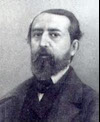
The commemoration for the loss of the illustrious members took place, in fact, in the extraordinary part-session of 2 February 1855, in the large hall of the University Library chosen specifically for the occasion. The fate of the two institutions continued along parallel lines, often intersecting with the political events that characterized the last years of Bourbon domination. Since 1854, when the government loosened, in some way, the severity of the censorship on scientific and literary works, the activity of the association resumed rapidly and the old members were joined by the young people who had been trained in the editorial offices of anti-government newspapers, and that represented the future of the city’s intellectuality. Among these were the names of those who, a few years later, would have made Messina famous in the field of national legal culture, such as, just to name a few, Domenico Ruggeri, Giovanni Pirrotta, Paolo La Spada, Giuseppe Sergi, Giacomo Macrì.
The process of national unification brought new lifeblood and vitality into the cultural scene of the city and as a demonstration of the dynamism of the intellectual environment, the legal journals published in the early sixties, which were added to the already present collections of Law and forensic news, were also accompanied by the first publications of the Academy. In 1863, in fact, thanks to the efforts of the General Secretary Antonio Catara-Lettieri, the Journal of Scienze, Lettere e Belle Arti della Reale Accademia Peloritana, was published, and , for the first time, both the ordinary members and the correspondents collaborated.
In the numerous issues published since the middle of 1863 and up until 1865, Giacomo Macrì's first evaluations of the new national reality that the unification of the Kingdom imposed on the reflection of Italian intellectuals began to find space, for example.
The acts of the Academy were the expression of the fortunate association existing, in particular, between lawyers and university professors, including Francesco Perroni Paladini, Letterio Gatto Cucinotta, Domenico Ruggeri, Salvatore Buscemi, Francesco Faranda . It was no coincidence that the first volume of Acts, in addition to containing the work of the extraordinary general session of 24 February 1878, in honour of Vittorio Emanuele II, contained, in the second section – legislation, a long and accurate critical study of Domenico Ruggeri Sul nuovo progetto di Codice Commerciale demonstrating how sensitive and close the Academy was to the themes proposed in those years by the national legal culture. Through the publication of the Acts, the Academy could underline the value of the members " la maggior parte de’ quali onorano col loro sapere la scienza e la letteratura, non che la Cattedra, il Foro ed il Sacerdozio”. 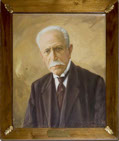 Leaders of the " nuove idee che hanno aperto nuovi orizzonti” in those years, were for Messina, together to the academician Salvatore Buscemi, also the professors Ferdinando Puglia “socio ordinario della classe 2ª Scienze giuridiche e sociali, Tommaso Cannizzaro, socio ordinario della classe 4ª Lettere, filosofia e belle arti” , as well as founders and directors of Naturalism-Monthly Journal of Sciences and Letters, periodical published in 1887, which devoted ample space to the legal issues, read in the light of the Positivistic method, the only scientifically valid method, in the opinion of the two scholars, because based on the results of observation and experience.
Leaders of the " nuove idee che hanno aperto nuovi orizzonti” in those years, were for Messina, together to the academician Salvatore Buscemi, also the professors Ferdinando Puglia “socio ordinario della classe 2ª Scienze giuridiche e sociali, Tommaso Cannizzaro, socio ordinario della classe 4ª Lettere, filosofia e belle arti” , as well as founders and directors of Naturalism-Monthly Journal of Sciences and Letters, periodical published in 1887, which devoted ample space to the legal issues, read in the light of the Positivistic method, the only scientifically valid method, in the opinion of the two scholars, because based on the results of observation and experience.
It seems significant and of particular importance, however, the substantial coincidence between the major positions in the governing bodies of the two most important city institutions. In 1889, in fact, Professor Giuseppe Oliva, Rector of the University, was elected, by a majority of votes, President of the Accademia Peloritana dei Pericolanti, a charge he would have held for over a decade.
b. Between the nineteenth and twentieth centuries.
The urban environment of the last quarter of a century was marked by deep economic dissatisfaction and dysfunction, but also by progressive tendencies such as positivism and legal socialism.
It is no coincidence that some publications began to circulate whose programme was based, for example, on the idea of a science of law supported by sociological studies and that the Acts of the Academy also gave space to such studies, expression of that important role played by a, substantially compact group of professors, academicians and professionals, in the process of homogenization between local and national legal culture.
A datum, as it seems evident, to be placed in the context of a city, a university and an academy, all in all, culturally peripheral although with a national vocation, as can be seen from the themes dealt both in the university classrooms and in the pages of the magazines, and in the halls of the Academy.
It should not be underestimated, in fact, that already in 1866, Giuseppe Ziino, professor of Forensic Medicine at the University of Messina, inaugurated the academic year with a prolusion by the significant title “Dell’indirizzo scientifico moderno” , in which he reiterated the necessity to study the historical phenomenon «nelle sue particolarità».
This theme found reception in the late eighties, not only in the pages of the city's legal journals, but also in the meetings of the Academy and in its Acts. These were the first approaches to the new scientific method in relation to which, theoretical comparisons would have been turned on, thanks to the publication of numerous medical-psychological and legal studies.
The national debate on juridical positivism, which began in the eighties and was all substantially deployed at the beginning of the last decade of the nineteenth century, despite the narrowness of the provincial area saw a significant attendance of the intellectuals of Messina. The link between the Athenaeum and Periclitantes was further established in 1900, on the occasion of the celebrations for the 350th anniversary of the founding of the Studium peloritano.
In this regard Gaetano Oliva would have affirmed:
“a questa festa intellettuale e patriottica ad un tempo associavansi tutte le classi della cittadinanza. Poteva quindi disinteressarsene l’Accademia Peloritana, che da secoli, e più in questi ultimi tempi, teneva vincoli strettissimi col nobile patrio Istituto del quale in quell’anno ricorreva la più grande solennità?”.
On that occasion, the Academy " che da secoli ha contribuito non poco alla cultura intellettuale del paese, e che la sua vita ha sempre sposato a quella dell’Università”, paid homage to the University of a miscellaneous volume containing six essays “che tendono a completare la storia del nostro Archiginnasio”.
A particularly significant moment for the Cenacolo messinese loomed up in 1903, on the occasion of the International Congress of History, held in Rome, with the participation of some members presenting the “Indici degli Atti Accademici” .
A few years later, the two most important cultural institutions of the city were again linked in the huge losses suffered during the disastrous earthquake that on 28 December 1908 destroyed Messina : 88 members out of 130 died on that occasion and the Academy “aveva avuto interamente rovinata la sua sede ….e con essa rovinati erano andati tutto il mobilio, la sua bella biblioteca, ricca di belle collezioni di Atti e Memorie delle principali società scientifiche d’Europa e d’America, i quadri, i mezzobusti che effigiavano molti socii, non che le sue carte e i registri di amministrazione, i titoli originali delle sue rendite, e perfino non le era rimasto un semplice esemplare della collezione dei già pubblicati volumi de’ suoi Atti”.
Almost to resume the ranks of a long itinerary that with tenacity and commitment was not to be considered concluded, Gaetano Oliva, ordinary member of the 3ª Classe, Scienze storiche e filologiche, published, in 1916, the “ Memorie storiche e letterarie della Reale Accademia Peloritana di Messina dal tempo della sua fondazione al presente”: a long historical-critical study on the life and activity of the Academy aimed to emphasize ”il suo passato …glorioso» a giustificazione della pretesa di un «maggiormente glorioso …avvenire” denouncing criticalities.
In the opinion of the member Oliva, a certain element of weakness of the  Academy of those years, which tried hardly, like the University of Messina, to undertake a path of normality after the devastation produced by the earthquake and the outbreak of the Great War, were the outdated Regulations, which greatly limited the number of members and did not adequately determine the characteristics of the Classes. Lacking competition and dialectical clashes, essential elements for the life of such associations, according to Oliva, the Academies, whatever their glorious past had been, " infermano, e corrono rapidissime alla morte”.
Academy of those years, which tried hardly, like the University of Messina, to undertake a path of normality after the devastation produced by the earthquake and the outbreak of the Great War, were the outdated Regulations, which greatly limited the number of members and did not adequately determine the characteristics of the Classes. Lacking competition and dialectical clashes, essential elements for the life of such associations, according to Oliva, the Academies, whatever their glorious past had been, " infermano, e corrono rapidissime alla morte”.
The need denounced by Gaetano Oliva was connected to another weak point in the life of the association, namely the lack of adequate financial contributions, essential to carry out modernization projects.
The scarce list of "mezzi pecuniari" displayed in the Memorie, left no doubt about the difficulties faced by the Cenacolo with a budget " appena bastevole a far fronte agli ordinari bisogni, a qualche raro e meschino incoraggiamento ai suoi soci, ed alla pubblicazione degli Atti Accademici”.
That speech was addressed to the city authorities with a clear request for financial support due to the changing times and needs, and it was based on the circumstance that most of the city administrators, municipal and provincial advisers, were members of the Academy. Their intervention in the appropriate locations could have brought back the Academy, thanks to a convenient annual income, to the ancient splendors and to regain the role that had been lost in the the context of the city's culture and this while the national landscape showed clear signs of change.
Carmelo La Farina
Giuseppe La Farina
5. 1918-1945: The Accademia Peloritana dei Pericolanti between the two wars
by Enza PELLERITI
a. Between earthquake and dictatorship, the years of reconstruction.
The thirty years that elapse between the two world conflicts marks a moment of fundamental importance for Messina's cultural institutions. That period of time coincides, in fact, with the (perhaps) most significant phase of the reconstruction, not only material, of the city after the catastrophic 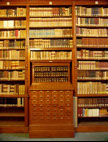 earthquake of 1908. It is not by chance that the lawyer Michele Crisafulli (professor of civil law), during a conference held on the occasion of the reopening of the Academy, stated “Messina potrà dirsi risorta quando torneranno a brillare […] non solo le sue forme, ma anco il suo pensiero”. The Academy quickly rose from the ashes and proudly resumed its activities, despite the earthquake had hit it so hard. The survivors believed that the noblest tribute to the victims of this disaster was to continue their work and so, two years later, they returned to meet. Significant in this sense is the speech of President Giuseppe Oliva, held on 21 June 1910 and published in the Acts of the Academy the following year.
earthquake of 1908. It is not by chance that the lawyer Michele Crisafulli (professor of civil law), during a conference held on the occasion of the reopening of the Academy, stated “Messina potrà dirsi risorta quando torneranno a brillare […] non solo le sue forme, ma anco il suo pensiero”. The Academy quickly rose from the ashes and proudly resumed its activities, despite the earthquake had hit it so hard. The survivors believed that the noblest tribute to the victims of this disaster was to continue their work and so, two years later, they returned to meet. Significant in this sense is the speech of President Giuseppe Oliva, held on 21 June 1910 and published in the Acts of the Academy the following year.
He vehemently expressed the desire that the scientific activity, abruptly interrupted, should soon resume its course, so that the noble tradition inherited from the missing colleagues could continue to live “a beneficio di questa terra che ha tanto bisogno dell’opera dei suoi figli”.
If the desire on the part of the academicians to want to rebuild the ancient association was so strong, the same could not be said for the University, against the restoration of which began an energetic press campaign also fed by the historian Gaetano Salvemini, professor in Messina, and ordinary member of the Academy, who had lost his family in the earthquake. Having overcome that difficult context, which too closely recalled the recurrent diatribes of the late nineteenth century on the opportunity to close the local University, the desire to react and to imagine as soon as possible a project of rebirth, urban planning, social and cultural city, would lead the authorities, both civil and religious, united in a synergy of intent, to focus their attention on the University.
Among the first buildings to resurrect in the slow reconstruction process was the University of Studies, whose new headquarters, strategically located in the heart of the city on the ruins of the old Jesuit College, was solemnly inaugurated in 1927 by the Rector, the geologist Giovan Battista Rizzo.
The Accademia Peloritana dei Pericolanti, the only survivor among the many associations who had characterized the cultural panorama Messina in previous centuries, would have found hospitality in the new palace of the University, in rooms on the ground floor of the central building.
b. Aspects of the life of the Academy in the early decades of the twentieth century. The new Statutes of 1928.
A few years later, however, the catastrophe of the First World War brought a further setback to the reorganisation of the Academy.
For example, the conflict slowed the need felt by members to reform the Statute drafted in 1889, now inadequate to the needs of a modern cultural association
If, in fact, already at the meeting on 27 January 1915, the Assembly had entrusted Prof. Achille Pellizzeri the task of preparing a draft reform of the existing regulation, the new Order found implementation only much later, in May of 1928. Many of the members of the Academy had, in fact, fulfilled their military obligations and, in general, the war had reduced the activities of the association. Also the publication of the Acts, which began in 1878, thanks to the Secretary General Prof. Antonio Catara- Lettieri, inevitably recorded discontinuities. The occasional meeting and institutional life, as well as the uncertain conditions “morali e finanziarie” of the Academy, were explicitly exposed both by the President Gaetano Vinci and by the Secretary General Mario Zalla, on the occasion of the General Assembly of 30 May 1928. If Vinci limited himself to underlining the most urgent needs, such as the amendment of the Statute, the reorganization of the classes and the library, the publication of the works, the Secretary mainly emphasized the fact that the " bicentenario Istituto " had not only been forgotten in Italy and abroad, but its existence, if not exactly ignored, certainly was not considered by Messina itself, despite the fact that the Academy had continued to publish, from the earthquake onwards, six volumes of Acts, although in a resigned form and with little publicity. He also noted that being a guest in that new place was not due to an act of generosity, but it was “ in virtù d’un diritto sancito da antico contratto legale”.
The reference is to a swap occurred at the end of the Nineteenth century between the University and the Academy: the latter ceded its headquarters adjacent to the Palace of the University and received in exchange from the University a room located inside the Palace itself. In that year, therefore, the new 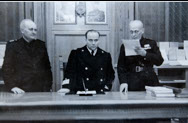 Statute came into force, which in Article. 1 provided that the Academy had the sole purpose of culture and the increase of science and literature and the arts. Among the classes, the legal and social sciences class was established, divided into two sections (legal sciences and political, economic and social sciences). The number of members was fixed at 140, of which 40 for the second class. Elections for the offices of president, vice-president, secretary general, vice-secretary general were held among the ordinary members by secret ballot. The charges lasted for 5 years, with the possibility of re-election. On the contrary, the positions of director, vicedirector and secretary of each class lasted three years. Articles 24 and 25 provided for the establishment of a Selection Committee for the work submitted by the respective classes for the purpose of publication in the Acts of the Academy. The committee would be chaired by the academy’s president or vice-president and it would include the director and the deputy directors of each class. Finally, a director of the publication of the Academic Acts would have been chosen among its members.
Statute came into force, which in Article. 1 provided that the Academy had the sole purpose of culture and the increase of science and literature and the arts. Among the classes, the legal and social sciences class was established, divided into two sections (legal sciences and political, economic and social sciences). The number of members was fixed at 140, of which 40 for the second class. Elections for the offices of president, vice-president, secretary general, vice-secretary general were held among the ordinary members by secret ballot. The charges lasted for 5 years, with the possibility of re-election. On the contrary, the positions of director, vicedirector and secretary of each class lasted three years. Articles 24 and 25 provided for the establishment of a Selection Committee for the work submitted by the respective classes for the purpose of publication in the Acts of the Academy. The committee would be chaired by the academy’s president or vice-president and it would include the director and the deputy directors of each class. Finally, a director of the publication of the Academic Acts would have been chosen among its members.
The new Staff Regulations, however, had to be applied only briefly.
Five years later, in fact, within the framework of the regime’s cultural policy, aimed at exercising stricter control over cultural institutions, the Ministry of National Education established, by the R.D.L. of 21 September 1933, n. 1333 (converted into law on January 12, 1934, n. 90) concerning also academies, which “entro un anno dalla pubblicazione del presente decreto the regulations of academies, institutes and associations of sciences, Italian letters and arts, would be reviewed.
All these institutions subject to State protection or supervision should have been coordinated with one another, in order to coordinate their activity, " di renderne, ove occorra, più efficace il funzionamento e di adeguare sempre più i fini degli istituti di cultura in genere” to the new ideological and political climate.
It was also provided that the reform of the statutes and regulations would be carried out by royal decree issued on a proposal from the Minister of National Education, after hearing the opinion of the Council of State. For this reason a central Commission was appointed to carry out the revision of the statutes and in order for it to have all the necessary elements to be able to operate, the interested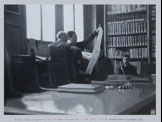 academies and associations were invited to submit to the Ministry by 15 October of the same year, any proposals for revision of its statutory and regulatory rules, an exhaustive report on the activities carried out over the last five years, and finally a complete report of the last financial year. The considerations sent by the Presidency Council of the Accademia Peloritana to the Minister of Education, highlighted the prestigious activities carried out by the Academy since its foundation. Alongside the recovery of the Academy’s past history and the continuity of its traditions, breaking elements constituted by the advent of the regime, starting from the new obligations of the oath, were underlined. In this perspective, amendments to the Statute were proposed with reference to the union of some sections into a single class.
academies and associations were invited to submit to the Ministry by 15 October of the same year, any proposals for revision of its statutory and regulatory rules, an exhaustive report on the activities carried out over the last five years, and finally a complete report of the last financial year. The considerations sent by the Presidency Council of the Accademia Peloritana to the Minister of Education, highlighted the prestigious activities carried out by the Academy since its foundation. Alongside the recovery of the Academy’s past history and the continuity of its traditions, breaking elements constituted by the advent of the regime, starting from the new obligations of the oath, were underlined. In this perspective, amendments to the Statute were proposed with reference to the union of some sections into a single class.
Thus, with regard to Class I, the fusion of the physical and mathematics sciences section with that of biological sciences was proposed; in relation to Class II, the merger of the juridical sciences section with that of political and social sciences; in relation to class III (historical-philosophical sciences, letters and arts), already divided into two sections (philosophical, historical and geographical sciences) and (philological sciences, letters, archeology and arts) returned to be reserved only for lovers of historical and philosophical sciences and restoring the class IV destining it to the lovers of philological, letters, archeology and arts sciences.
Finally, it was proposed to increase the number of members from 140 to 180, requesting, as a prerequisite for the appointment of new members, membership in National Fascist Party. By complying with the provisions of art. 3 of the aforesaid law, which sanctioned the obligation of Oath of allegiance to the Sovereign and to the fascist regime by the President and the members of the academies and other cultural institutes, article 16 of the new statute of the Accademia Peloritana followed the ritual formula, pointing out that those who had not fulfilled this obligation would have lapsed. Therefore, the President pro tempore and the members of the academies were obliged to take the oath within two months of publication of the same statute.
The same fate touched the University where the teachers, to continue to remain in service, had sworn loyalty to the regime. Although it should be noted that Prof. Giorgio Errera, chemist, professor at the University of Messina, a member of the Academy until 1908, was one of the twelve Italian professors who in 1931 refused to swear allegiance to fascism. t was evidently the attempt to harness the activities of the academies, but also of the universities and in general, of all the institutes of Culture, subjating them to heavy controls, and intervening where they represented or could represent dangerous centers of political dissonance with against the ideology of the regime.The new Statute of the Pericolanti was approved in October 1934 and with a subsequent ministerial decree of 20 May 1935, according to the rules of the art. 11, the academicians Gaetano Vinci and Domenico Puzzolo-Sigillo were appointed respectively President and Vice-President for the five-year period 1935-40.
The above article also stated that those appointments should be made by the Ministry of National Education, even if appointed by the General Assembly of Ordinary Members. As regards the designation of members, regardless of their category, they were appointed, in accordance with Article 10, by the Assembly of Ordinary Members.
However, their appointment would not have taken place until after the approval of the Ministry of National Education. Moreover, the Ministry of National Education had to be informed of the transfers of ordinary members, due to various causes (health reasons, late age), in the other categories, a clear sign of the massive intervention of Fascism on the autonomy of the academies as on other cultural institutions in the Country.
c. The Academy and the University in the years of the Anglo-American occupation.
The end of the war, which took place in Sicily about two years earlier than the rest of the country, following the Anglo-American landing on the coast of Gela in the summer of 1943, temporarily separated the events of the island from those of the continent.
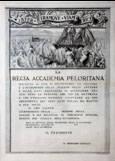 The establishment of the AMGOT, the Allied Military Government Agency for the occupied territories, settled on the ruins of the fascist administration, should not have remained without consequences also for the Academy.
The establishment of the AMGOT, the Allied Military Government Agency for the occupied territories, settled on the ruins of the fascist administration, should not have remained without consequences also for the Academy.
In fact the Allied Military Government would have taken steps to establish the so-called AM professors in Sicilian universities. Substantially these appointments were part of the process of “defascistizzazione” of the University adopted by the allied military government in November 1943, and related to the appointment of some "extraordinary" professors to replace others, that for war reasons or because too much compromised with the fascism, had become in fact incompatible with the new political and cultural horizon. The result was the appointment of thirty-nine professors of various roles distributed among the Sicilian universities.The most benefited was Messina, followed by Palermo, seat of the military government, and finally Catania.
At the time of the return of Sicily in the context of the Italian administration and therefore with the restoration of the ordinary university recruitment procedures, some of those professors immediately submitted to regular competitions, while others remained "extraordinary" and extended until retirement. Once again, then, the events of the University returned to intertwin with those of the Academy. Indeed, the same Am professors were members of the Academy, some accessions even dated back to the fascist period, when they had taken part with the qualification of free teacher.
As an example we can mention, in 1934, the chemist Francesco Monforte and the pharmacologist Giuseppe Carbonaro; in 1936 also Francesco Basile, free lecturer, in charge of Design in the Regia Università di Messina and Bruno Ricca, free lecturer in general chemistry, were members of the Academy. Finally, in 1940, we find the jurists Andrea Arena and Angelo Falzea. Although for many of them it would have been only a formal membership or interest, it can be deduced that some of those appointments that took place in the years of the regime had led, by the teachers, the performance of the oath formula in front of the members of the Academy. In any case, in the eyes of the Allies most of those teachers were not compromised by Fascism and this was considered a sufficient requirement for the appointment as extraordinary professor by the AMGOT.
In general, however, the Peloritan Academy would not have escaped the control and purge by the Anglo-Americans. The process of defascistizzazione, in fact, had affected not only the University but also the rest of the public administration. In February of 1944, at the request of the AMGOT will be declared forfeit well 36 members considered colluzing with fascism.
In the General Assembly of the Members, on 14 February of that same year, the amendment of certain articles of the Statute in particular of articles 11, 14, 15 was required, and therefore substantially the social charges returned to be elective and no longer within the competence of the Minister of National Education or of presidential nomination and new elections were called. Obviously, the imposition of the oath provided for in Article 16 was eliminated. With the changes made at the request of the Allied administration, the Statute was therefore reformed in a way that was more «consono al nuovo clima democratico».Shortly thereafter, on 23 May, the Assembly approved the amendments to the regulation. The legal class became the third and reduced to twenty-two units; the maximum number of members would have been raised to 100 and opened to the aggregates and correspondents. On 2 February 1944 the confirmed members were summoned to the headquarters destroyed by the bombing, which had incessantly battered the city in the preceding months, to make contact with the new administrators and representatives of the allied government.
The occasion was that of the inauguration of the 215th anniversary of the founding of the Academy.
The opening speech was pronounced by President Gaetano Vinci, who on the one hand stressed the "grave historical moment" lived by the city, on the other expressed complacency for the presence of Colonel Robert Gayre, not only as a representative of the allied government, but as a "colleague" and scholar.
The English officer could be considered an intellectual lent to military institutions.
He was, in fact, AMGOT's educational adviser, a professor at the University of Oxford, Director of the Edinburgh Institute of Anthropology, and among other things, he had taken up the charge of social anthropology at the University of Palermo.
On that occasion the "studioso in divisa" had held a lecture on the theory of blood groups. As was commented in an article published in the Messina Newsletter on 12 February, Gayre set out his ideas on the beneficial effects of the mixing blood groups over the centuries.
This phenomenon, both cultural and biological, had given rise to a real melting pot of races and prevented the formation of ethnologically perfect bloodlines.
In this theory, the sharp denial of Germanic racist theories and Italian racism became relevant.
In the crowded hall of the Academy, on that occasion there was the rector, Prof. Gaetano Martino, a member of a well-known liberal family of Messina and protagonist of the political events of the following decade, which marked, however, symbolically, the transition to a renewed democratic order.Even the Messina association emphasized that important transition phase.Emblematic, in this sense, was the prolusion of the member of the Academy Franco Pierandrei, entitled La Costituzione e il potere costituente , later published in the Acts of the academic year 1945-1946. In it, the constitutionalist emphasized the end of a nightmare.
After more than twenty years of fascist dictatorship and at the end of the Second World War, the foundations could finally be laid for the birth of a democratic order. The reference was to a new constitution drawn up by a Constituent Assembly, with the aim, Pierandrei argued, of creating a " governo del popolo esercitato dal popolo per il popolo”. Perhaps it was no coincidence that, just in that volume of Acts, which sealed the return to "normality", one could read an essay that strongly demanded the renewal of the rules and principles of democracy and their relationship with culture and intellectuals. The Accademia Peloritana dei Pericolanti, once again a place of culture, was the interpreter of a common feeling for a different and better Italy.
S.A. Reale il Duca di Genova alla Reale Accademia Peloritana
6. Recent events
by Vittoria CALABRò
a. New order, ancient questions. Financial problems.
Among the many problems that the Academia Peloritana would have had to face immediately after the end of the Second World War, the question of funding was highlighted.
There were various sources from which, over time, the association of Messina would have received the necessary contributions to carry out its activities: the state, local authorities, private citizens, individual members.
Specifically, the inclusion of the Academy among the cultural institutions worthy of receiving a state contribution was sanctioned, during the twenty years of Fascism, by the Decree Law of 21 September 1933, n. 1333, (converted into Law No. 90 of 12 January 1934), which required the revision of the statutes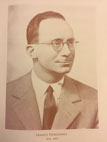 and regulations of the Italian academies. Following the transition from the Monarchy to the Republic, , there was a need to review that provision and update the contributions paid. With that purpose, in fact, on 27 March 1948 the provisional head of the State Enrico De Nicola signed, on the proposal of the Minister of Public Education Guido Gonella and of the Treasury for the Gustavo Del Vecchio, the Legislative Decree n. 472 bearing Aumento delle dotazioni a favore delle accademie e degli istituti culturali. The Messina association was not included, however, in the long list of subjects that, according to art. 1 , from the financial year 1947 to 48, would have benefited from new State contributions, paid to different levels for different types of institution. However, we cannot know the reasons for that exclusion. Following that decision, adopted " per fatale errore o dimenticanza … malauguratamente e certamente involontariamente”, the Academy would have received an annual contribution of only two million lire from the Ministry of Education that, in the opinion of Secretary General Giovanni Carini, was " assolutamente insufficiente a finanziare le più elementari esigenze". On 30 August 1975, the situation seemed to be unblocked following the signing by President of the Republic Giovanni Leone of Presidential Decree no. 635 (Norme di attuazione dello statuto della Regione Siciliana in materia di accademie e di attuazione dello statuto della Regione Siciliana in materia di accademie e biblioteche) a provision that the Academicians of Messina considered to be a harbinger of the much-needed increase in funding. However, the Peloritan Association was destined to remain deeply disappointed by the limited amount of the annual contribution paid (L. 1 million). The financial problem was somehow resolved by the University, whose Board of Directors, for that year, had resolved to allocate an extraordinary contribution.
and regulations of the Italian academies. Following the transition from the Monarchy to the Republic, , there was a need to review that provision and update the contributions paid. With that purpose, in fact, on 27 March 1948 the provisional head of the State Enrico De Nicola signed, on the proposal of the Minister of Public Education Guido Gonella and of the Treasury for the Gustavo Del Vecchio, the Legislative Decree n. 472 bearing Aumento delle dotazioni a favore delle accademie e degli istituti culturali. The Messina association was not included, however, in the long list of subjects that, according to art. 1 , from the financial year 1947 to 48, would have benefited from new State contributions, paid to different levels for different types of institution. However, we cannot know the reasons for that exclusion. Following that decision, adopted " per fatale errore o dimenticanza … malauguratamente e certamente involontariamente”, the Academy would have received an annual contribution of only two million lire from the Ministry of Education that, in the opinion of Secretary General Giovanni Carini, was " assolutamente insufficiente a finanziare le più elementari esigenze". On 30 August 1975, the situation seemed to be unblocked following the signing by President of the Republic Giovanni Leone of Presidential Decree no. 635 (Norme di attuazione dello statuto della Regione Siciliana in materia di accademie e di attuazione dello statuto della Regione Siciliana in materia di accademie e biblioteche) a provision that the Academicians of Messina considered to be a harbinger of the much-needed increase in funding. However, the Peloritan Association was destined to remain deeply disappointed by the limited amount of the annual contribution paid (L. 1 million). The financial problem was somehow resolved by the University, whose Board of Directors, for that year, had resolved to allocate an extraordinary contribution.
At the meeting of 18 February 1978, the General Assembly approved a motion addressed to the regional government requesting the institutionalisation of funding for the benefit of the Academy.
On 16 January of the following year, the new regional councillor for Cultural Heritage, Environment and Public Education, the christian democrat from Messina Luciano Ordile, who would have kept that charge almost uninterruptedly from 1978 to 1985, addressed a letter to the President of the association, the physiologist Gaetano Livrea, ensuring his interest <<in occasione di prossime iniziative legislative». Since 1981, the Academy has finally been counted among the high culture institutions of the Region, worthy of receiving a stable contribution. For that year, in fact, it would have received fifteen million lire from the Sicilian Region, thirty million lire from the University's Board of Directors and five million lire from the Ministry of Education. Other good news on the funding side came in 1984 when, on 8 August, the Ministry for Cultural Heritage informed President Guglielmo Stagno d'Alcontres that the Academy had been included for the three-year period 1984-86, among the cultural institutions admitted to receive an ordinary annual contribution of forty million lire. The dark times seemed to go away forever.
In the mid-1990s, however, large clouds were gathering on the horizon: due to the lack of regular provision of funding by the Ministry, of the Region and of the University’s Board of Directors, the General Assembly of Members meeting on 10 April 1996 decided to reduce the number of events planned for the academic year, preferring, for obvious reasons, only those that could be organized at no cost.
In times close to us, even the Accademia Peloritana dei Pericolanti would suffer for cuts in funding that would have affected the university and other cultural institutions, to a different but significant extent.
b. The statutory amendments.
On several occasions, in the long period of time between the second post-war period and the present day, the General Assembly of the Academy would have been called upon to make substantial amendments and / or small additions to the Statute and the Regulations. The need to proceed to a revision of the texts, dating back to 14 February 1944 ,emerged during the meeting of 29 December 1964 and it was supported by both the Director of the Class of Medical-Biological Sciences, the pathologist Luigi Carmona, and by the Secretary General of the same Academy, Letterio Cannavò. Both agreed on the urgency of reviewing, specifically, the art. 3 of the Statute which set the maximum total number of ordinary members at 100: that limit, in fact, in their opinion, was no longer adequate for what they defined as “l’incremento avutosi nella ricerca scientifica e nella istituzione di nuovi Istituti e cattedre universitarie”, hoping, for this reason, for an appropriate increase.
The following year, the proposed change, which also included a request to revise Article 1 of the Regulations (which allocated the number of ordinary members among the four classes), was adopted by the Medical and Biological Sciences Section, which suggested that it be " accordati n. 42 Soci ordinari in luogo dei 35 attuali".
The question of amending the Statute and the Regulations was finally resolved at the meeting of 15 June 1966.
In fact, after a long and detailed discussion, the General Assembly chaired by Gaetano Martino (who had been elected Rector of the University of Rome the previous day) decided not to provide any limitations for aggregate, corresponding and honorary members and to raise to 150 the total number of ordinary members who, according to the new art. 1 of the Regulation, were as follows: 27 for the Class of Physical, Mathematical and Natural Sciences, 53 for the Class of Medical-Biological Sciences, 33 for that of Legal Sciences and 37 for that of Letters, Philosophy and Fine Arts. Only three years after that important but circumscribed revision, the need for a more incisive intervention came back to the attention of the academicians. It was the Rector of the University, the jurist Salvatore Pugliatti, elected President of the association on 18 November 1967 after the death of Gaetano Martino, to submit to the attention of the ordinary members the modifications elaborated by a special commission appointed by the Presidency Council in order to update those two normative texts which, dating back to 1944, were " assolutamente inadeguati sia all’attuale regime di democrazia instaurato nel nostro Paese, sia al rapido progresso avvenuto nel costume e nel campo e metodo di studi”.
Most of these were changes of a lexical nature: in particular, the naming of the III Class underwent a small but significant variation, passing from Scienze giuridiche to a more inclusive Scienze giuridiche, economiche e politiche.
The most important change, however, was introduced by Article 11 of the Statute and provided for the establishment, for each of the four classes, of the figure of the Deputy Director, whose main task was to replace the Director in the event of absence. The introduction of this charge would also have had an impact on the structure of the Presidency Council which, integrated with the new units, thus increased from 13 to 17 members. A long period of time would have elapsed before the academicians went back to modify those two texts again, despite the fact that in April 1975 President Pugliatti had appointed the Secretary General Giovanni Carini and professors Bruno Ricca and Giuseppe Catalfamo, respectively Director of the Class of Physical, Mathematical and Natural Sciences and Vice-Director of that of Letters, philosophy and fine arts, to subject them to careful examination and updating as hoped for by the Presidency Council which had highlighted some shortcomings.
Subsequent revision interventions were prepared, however, many years later, during the long presidency of Professor Guglielmo Stagno d'Alcontres who would lead the association of Messina from June 12, 1984, when he was elected to office at the end of the mandate of Gaetano Livrea who had decided not to re-appoint his candidacy, until 1995.
Already in 1986, in fact, the Members approved certain variations prepared by a working group constituted by the Secretary General, the Librarian and the executive of the four Classes.
However, it was necessary to wait until 1992 for a more substantial revision work which was entrusted to a commission made up of the President and professors Giovanni Carini (Secretary General of the Academy), Gustavo Barresi (Director of the Medical-Biological Sciences Class), Vincenzo Panuccio (Director of the Juridical, Economic and Political Sciences Class), Andrea Romano (Secretary of the Juridical, Economic and Political Sciences Class), Salvatore Costanza (Librarian) and Paola Colace (Vice-Librarian).
That long and complex process was concluded on 15 April 1993, when the new Statute and the new Regulation were approved by the General Assembly. There were two major innovations. The first would have modified the composition of the Presidency Council which, according to art. 5, it was integrated by Librarian, Vice-Librarian, Bursar and Deputy Bursar. The second, instead, was sanctioned by art. 30, which said: « Il Presidente dell’Accademia è di diritto il Rettore dell’Università di Messina». This rule ended up regulating a " costante prassi seguita da molti decenni " according to which, at the end of each mandate, the General Assembly had always elected, as President of the association, the Rector in office. A principle with a strong political connotation aimed at making the link between the two institutions increasingly closer. Those texts, thus modified, would remain in force until 7 April 2016, when the General Assembly approved the new versions, which were further subject to slight modifications by the General Assembly of 13 January and 27 April 2017.
c. 1979, an important milestone. The celebrations of the 250th anniversary of the foundation.
During 1979, on the occasion of the 250th anniversary of its foundation, the General Assembly of the Academy met three times to plan the celebrations of that important event. It was during the first of those meetings, convened on 26 February, that the idea of organizing a celebratory event took shape and Gaetano Livrea, President of the Academy and Magnificent Rector of the University, proposed the establishment of a commission, formed by the Directors of the four classes, to study the feasibility and advance concrete proposals. The event, which also included the distribution of a commemorative medal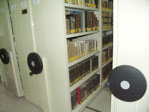 and a speciale annullo filatelico,took place Saturday, 19 April at 9:30 a.m., in the Aula Magna of the University. The main stages of the Academy's two hundred and fifty years of life were outlined by Antonino Metro, Professor of Roman Law, in an effective introductory report, followed by an interesting contribution by Professor Salvatore Boscarino, professor at the University of Palermo, who dealt with the problems connected with the conservation and restoration of some monuments in Messina.
and a speciale annullo filatelico,took place Saturday, 19 April at 9:30 a.m., in the Aula Magna of the University. The main stages of the Academy's two hundred and fifty years of life were outlined by Antonino Metro, Professor of Roman Law, in an effective introductory report, followed by an interesting contribution by Professor Salvatore Boscarino, professor at the University of Palermo, who dealt with the problems connected with the conservation and restoration of some monuments in Messina.
The work continued with four interventions dedicated to the analysis of the relevant contributions provided by the Academy to the culture and development not only of the city of Messina but also of the whole of Sicily. In particular, respecting the different souls of the peloritano association, Professors Vincenzo Panuccio, Ugo Cucinotta, Girolamo Cotroneo and Bartolo Baldanza were called to trace the contribution of the Periclitantes to juridical-social, medicine, philosophy studies, and in the field of earth sciences.
A few years later, the Acts of that event were published: in 1984, in fact, a volume was published ; in addition to collecting the contributions of the speakers, it also contained a brief address of greeting by Professor Giuseppe Gemignani, representative of the Academy of Sciences, Letters and Arts of Modena, and an essay by philologist Paola Colace Radici on the contribution of the academicians of Messina to the study of classical disciplines.
d. The last few years.
The most recent events of the Peloritana Academy of Pericolanti have been marked by a long stalemate. In July 2010, the Rector and President of the association, the neurosurgeon Francesco Tomasello, had updated the members present on the progress of the Academy's renovation work, hoping for a short time for the delivery of the headquarters and observing, with satisfaction, how normal activities had not suffered interruptions and slowdowns due to the inconveniences connected with the unavailability of the rooms. 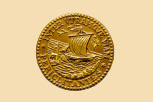 The meeting concluded after having planned the initiatives to be carried out in the academic year, approved the 2009 final budget and the 2010 budget, appointed the new members and approved a proposal for the integration of the art. 13 of the Regulation.
The meeting concluded after having planned the initiatives to be carried out in the academic year, approved the 2009 final budget and the 2010 budget, appointed the new members and approved a proposal for the integration of the art. 13 of the Regulation.
From that date, however, a decidedly anomalous period would have begun in the history of the Accademia Peloritana: the General Assembly and the Presidency Council would no longer have been convened while, once the work had been completed and the seat returned, consultation of the institution's valuable library patrimony would have been available again only from 14 January 2013.
An unusual situation, which would also have had a negative effect on the periodicity of the publications of the Acts of the individual classes, with the exception of that on-line of the Class of Physical, Mathematical and Natural Sciences which continued, instead, with regularity, by providing, in the years 2011-2014, in addition to the usual six-monthly dossiers, even some supplements.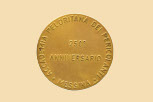
That atypical phase lasted until the meeting of 7 April 2016 when the General Assembly unanimously approved the 2011-2015 budgets and the current year’s one (prepared by a commissioner ad acta specially appointed by the President, Professor Pietro Navarra), deliberated on the appointment of a significant number of new members, proceeded to update the Statute and Regulations, welcomed some projects of collaboration with other associations that would have favoured the relaunch of the scientific and cultural activities of the Academy and agreed on the proposal put forward by the Rector to convene, in a short time, the individual classes in order to proceed to the designation, by vote, of their respective directors, deputy directors and secretaries. The latter operation is preliminary to the necessary and no longer postponable election of the Presidency Council for the five-year period 2016-2020.
It started, thus, for the association Messinese, a new course that put an end to the anomaly lived between 2011 and 2016, the longest ever recorded since the Second World War onwards, a time span of almost seventy years during which the Academy would fronted, and surpassed, as other times in the course of its centuries-old existence, not a few difficulties and problems but also promoted important appointments.
The new Statutory drafting, moreover, expresses the sense of the renewed role that the old association is called to assume both in the relationship with the University and, in particular, with the territory.
Reference bibliography
• 250° anniversario della fondazione della Accademia Peloritana dei Pericolanti (1729-1979), Messina, Presso l’Accademia, 1984;
• Alessi L., Le Accademie di Sicilia nel Settecento, Palermo, Travì, 1925;
• Aricò L., Sicilia accademica (secc. XVII e XVIII), Palermo, Scuola Tipografica Ospizio di Beneficenza, 1928.
• Atti del seminario internazionale “Accademie e Scuole. Istituzioni, luoghi, personaggi, immagini della cultura e del potere”, a cura di D. Novarese, Montalbano Elicona 22- 24 luglio 2010, Milano, Giuffrè, 2011.
• Atti della Accademia Peloritana dei Pericolanti. Parte storica ed ufficiale. Anni accademici CCXXXI-CCLXI (1979-1979), volumi LII-LXXXII – 14° a 44° della Nuova Serie, Messina, Presso l’Accademia, 1982;
• Atti della Accademia Peloritana dei Pericolanti. Parte storica ed ufficiale. Anni accademici CCLXII-CCLXVI (1980-1984), volumi LXXXIII-LXXXVII – 45° al 49° della Nuova Serie, Messina, Presso l’Accademia, 1989;
• Atti della Accademia Peloritana dei Pericolanti. Parte storica ed ufficiale. Anni accademici CCLXVII-CCLXXVI (1985-1994), volumi LXXXVIII-XCVII –50° - 59° della Nuova Serie, Messina, Presso l’Accademia, 1997.
• Avvocati a Messina. Giuristi tra foro e cattedra nell'età della codificazione, a cura di G. Pace Gravina, Messina, GBM by GEM 2007.
• Basile M., Il dibattito politico-culturale nella Messina del Settecento. I “Discorsi” degli “Accademici Pericolanti”, Roma, Aracne, 2013.
• Basile M., Statuti dell’Accademia Peloritana dei Pericolanti, in Gli Statuti universitari: tradizione dei testi e valenze politiche. Atti del Convegno internazionale di Studi di Messina- Milazzo 13- 18 aprile 2004 (a cura di A. Romano), pp. 879- 892; edito anche in Boletin de la Real Accademia de Córdoba, de Ciencias, Bellas Letras y Nobles Artes, enero- junio 2006, LXXXV- 150, pp. 213- 228.
• Bentivegna G., Dal Buon Gusto all'anti-illuminismo, in ID., Dal riformismo muratoriano alla filosofia del Risorgimento. Contributi alla storia intellettuale della Sicilia, Napoli, Guida, 1999, pp. 21-136
• Di Matteo S., Accademie e cultura accademica nella Sicilia del Sei e Settecento, in Rassegna siciliana di storia e cultura, 2 (1997), pp. 37- 56.
• Fleres A., Commemorazione dei soci morti nel disastro del 28 dicembre 1908, in Atti della R. Accademia Peloritana, XXIV (1911), p. 91.
• Giarrizzo G., Ricerche sul Settecento italiano. Appunti per la storia culturale della Sicilia settecentesca, in Rivista storica italiana, III, 1967, pp. 573- 627.
• Granata M., Orazione inaugurale di D. M. Granata nella Regia Università di Messina pronunciata nell’apertura della medesima, Messina 1839, ora in ristampa anastatica in Monumenta Historica Messanensis Studiorum Universitatis, a cura di A. Romano, Fonti 2, Messina 1992.
• Leone S., Tra massoneria ed Illuminismo in Sicilia: Andrea Gallo da Messina, in Archivio Storico per la Sicilia Orientale, LXXVI (1980), pp. 431- 572.
• Maylender M., Storia delle Accademie d'Italia, 5 voll., Bologna, Cappelli, 1926- 1930.
• Metro A., I 250 anni dell’Accademia, in Atti della Accademia Peloritana dei Pericolanti, LXXXVIII- XCVII (1997), pp. 7-16.
• Novarese D., Accademie cittadine, in, Storia e civiltà. Messina, a cura di G. Molonia, Messina, GBM, 1997, pp. 311- 315.
• Oliva G., Memorie storiche e letterarie della Reale Accademia Peloritana di Messina dal tempo della sua fondazione fino al presente per Gaetano Oliva socio ordinario della stessa Accademia, in Atti della R. Accademia Peloritana anno CLXXXVII- CLXXXVIII , vol. XXVII, Messina 1916, pp. 95- 468.
• PAnuccio V., Gli Studi giuridico-sociali dell’Accademia in 250° Anniversario della Fondazione della Accademia Peloritana dei pericolanti (1729-1979), Messina 1984, p. 41-45.
• Pavone M.P., Aggiunte alla storiografia artistica messinese del primo Ottocento. I “Discorsi” di due soci dell'Accademia Peloritana: Domenico Bottaro e Carmelo La Farina, in Quaderni dell'attività didattica del Museo Regionale di Messina 12, Miscellanea di Studi e ricerche (a cura di Gioacchino Barbera), Regione Siciliana, Assessorato dei Beni Culturali Ambientali e della Pubblica Istruzione, Dipartimento Regionale dei Beni Culturali Ambientali e dell'Educazione Permanente, Museo Regionale di Messina, Palermo 2002, pp. 77- 101.
• Pelleriti E., “Italy in transition”. La vicenda degli Allied Military Professors negli Atenei siciliani fra emergenza e defascistizzazione, Acireale-Roma, Bonanno Editore, 2013.
• Pelleriti E., Gli “Am Professori” nell’Università di Messina e nella Sicilia governata dagli alleati, in La storia delle università alle soglie del XXI secolo, Bologna 2008.
• Romano A, Studi e cultura nella Messina del primo Novecento. L’Università fra crisi e terremoto in Atti della Accademia Peloritana dei Pericolanti, LVIII, (1991), p. 38 e ss.
• Romano A., L’Università degli Studi di Messina negli anni Venti e Trenta del Novecento, in Messina negli anni Venti e Trenta. Una città meridionale tra stagnazione e fermenti culturali, a cura di R. Battaglia, M. D’Angelo, S. Fedele, M. Lo Curzio, II, Messina 1997, pp. 406-407.
• Saitta A., Accademie messinesi, Messina, Il Fondaco, 1964.
• Trimarchi C., Istituzioni politiche e istituzioni culturali nella Sicilia della tarda età moderna. Le Accademie, Roma, Aracne, 2009.
• Ventimiglia D., Storia documentata della Università degli Studi di Messina. Orazione per la solenne inaugurazione della ripristinata Università, Messina 1839, ora, in ristampa anastatica in Monumenta Historica Messanensis Studiorum Universitatis, a cura di A. Romano, Fonti 2, Messina 1992.
[Translated by C. L. Gambino]
Accademia Peloritana dei Pericolanti - Palazzo Università - Piazza S. Pugliatti 1 - 98122 Messina, Italy
Tax Code: 97028750830 phone (+39) 090 6768911 - (+39) 090 6768620
e-mail: segreteria@accademiapeloritana.it - Certified Mail: segreteria@pec.accademiapeloritana.it
Privacy e Cookies
Credits and Copyright
♦

